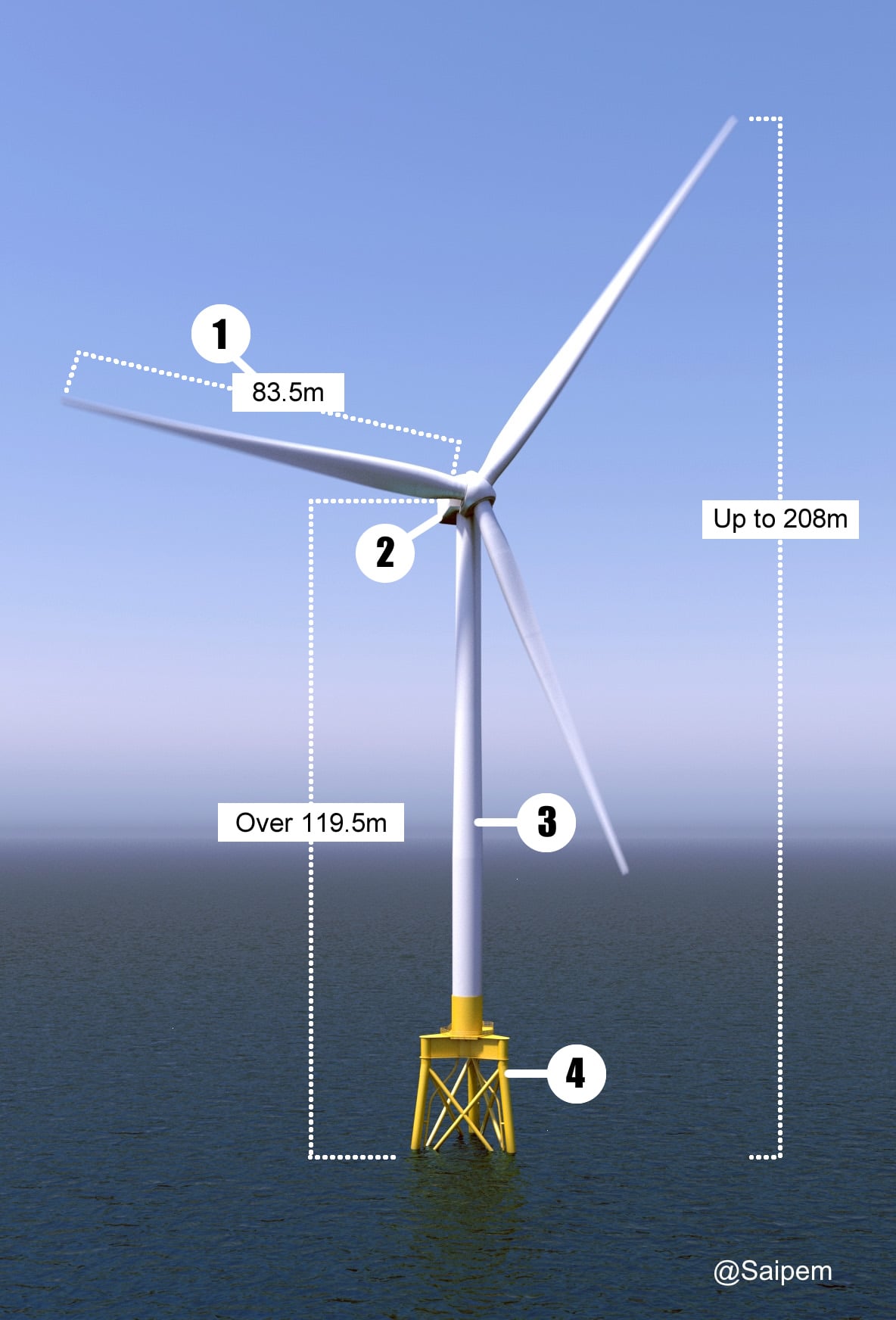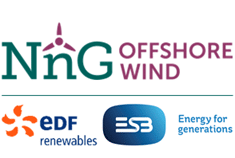Project
NnG Offshore Wind FarmNnG has the potential to generate 450 MW of renewable energy, which is enough power to supply around 375,000 Scottish homes – and will offset over 400,000 tonnes of CO2 emissions each year.
The NnG site was chosen because it combines technical, economic and environmental deliverability. Some of the criteria that formed part of the site selection process included; water depth, ground condition, expected energy yield, access to port facilities and more.
NnG won a Contract for Difference (CfD) in 2015, providing the windfarm with an inflation-linked strike price for the electricity it produces for a period of 15 years.
EDF Renewables UK acquired the project in May 2018 as part of a competitive bidding process and ESB acquired a 50% in November 2019.
NnG is a fantastic project for Scotland and with onshore and offshore construction well underway it is an exciting time for the project.
Planning & consent
Offshore Consents – Original Application
In 2009, three years of offshore environmental surveys commenced to gather information on natural habitats and species, physical conditions and human activities at the NnG site.
This information was collected to inform a detailed Environmental Impact Assessment (EIA), which was submitted with an application for consent for the offshore elements. This information is set out in an Environmental Statement, which can be viewed on the ‘resources’ section of this website.
Onshore Planning Permission
Facts and Benefits
- EDF Renewables bought the Neart na Gaoithe offshore wind farm project (NnG) in May 2018 and it is expected to be fully operational in 2023.
- ESB purchased 50% of the project in November 2019.
- The wind farm will produce up to 450 MW of low carbon energy and will have a maximum of 54 turbines.
- NnG will provide power for around 375,000 homes and will offset more than 400,000 tonnes of carbon dioxide emissions.
- We are committed to using local content (using Scottish firms and Scottish workers) and we have a track record of doing this already.
how a Wind Turbine Generator Works

1. The Blade
The blade is specifically designed to flex and move to capture the most amount of wind, yet be protected in very high winds.
2. The nacelle
The nacelle contains all the components to control the turbine and convert the rotational movement to electricity via the main generator.
3. The tower
The tower supports the nacelle and the blades; it also houses important electrical components.
4. The turbine foundation
The turbine foundation is a 3 legged lattice "jacket" foundation with three pin piles fixed to the sea bed.
Tier one contractors
NnG has six tier one contractors who are trusted by EDF Renewables and ESB to deliver large sub packages of the project on time and to budget. These companies have world class reputations in offshore wind and have worked across many successful projects not only in Scotland and the UK but throughout the world.
The tier one contractors for NnG are as follows:
